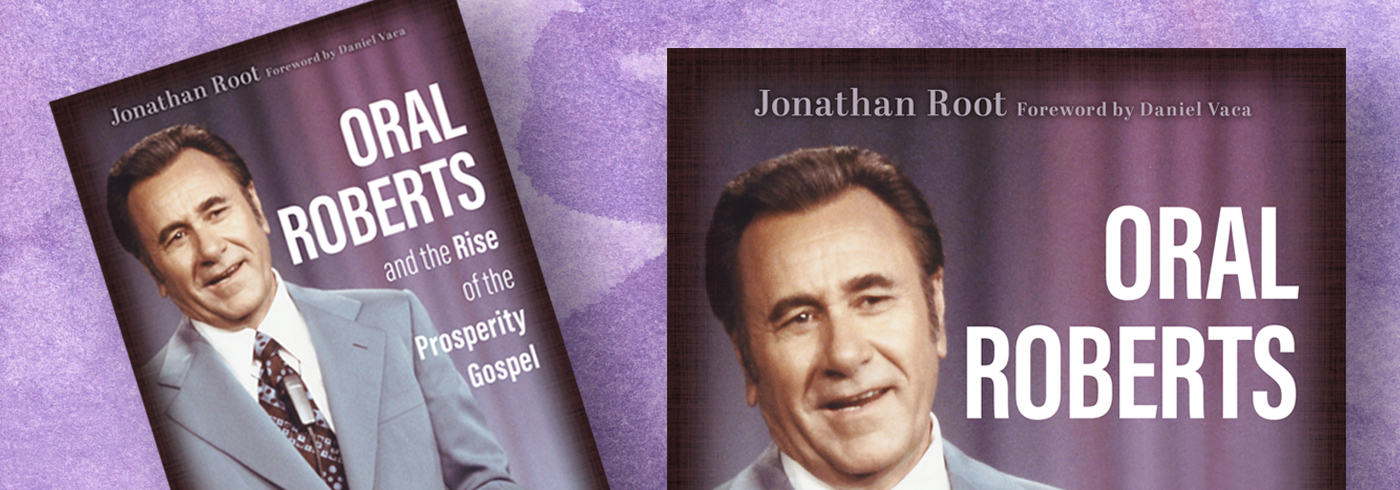Right Book, Right Time, Wrong Title
Review of ‘Oral Roberts and the Rise of the Prosperity Gospel’ by Jonathan Root
Oral Roberts was among the most significant figures in the 20th-century American religious landscape.
Roberts rose to prominence during the 1950s through his Pentecostal healing evangelism services, which he broadcast on mainstream television.
By the 1980s, a new generation associated Roberts more with his prosperity teaching and appeals for funding than with his media innovations. Much of this history was captured in David Edwin Harrell Jr.’s 1985 biography of Roberts.
However, in the years following that book, Roberts slowly became a national caricature, his status reduced from healing evangelist to a religious fundraising charlatan. This resulted from his appeals to fund the City of Faith Medical and Research Center. That caricature is the Roberts most people know.
In Oral Roberts and the Rise of the Prosperity Gospel, historian Jonathan Root provides an updated and much-needed study of the famed minister’s complex legacy. Root offers an empathetic, yet honest look at this important figure. Without glossing over the negative aspects of Roberts’ story, this book also highlights his remarkable accomplishments.
Root chronicles Roberts’ impoverished upbringing, early successes as a Pentecostal Holiness evangelist, and elevation of healing within the Pentecostal community. The biography follows Roberts from his tent crusades to his prime-time television ministry and the founding of a university bearing his name. It discusses the importance of the groundbreaking charismatic university, which included the first graduate theological seminary in the Pentecostal tradition.
The book also explores Roberts’ often-neglected legacy on civil rights issues. Guided by its founder’s “colorblind” theology, Oral Roberts University (ORU) became one of the few conservative evangelical universities in the 1960s to actively seek a racially diverse student population.
The culture on campus provided safe places for conversations on civil rights. Roberts also developed racial empathy because of his closeness to Black students in the athletics program.
This book brings a much-needed, up-to-date, critical study of a significant figure in American religious history after decades of stigma and neglect.
Throughout the book, Root offers insights into business decisions that enabled Roberts’ success and sustained his vast ministry. In particular, he highlights the role of television in making Roberts a household name.
Ministry broadcasts gave Roberts a national platform for his “seed faith” theology, which emphasized sowing and reaping financial blessings. It is here that Root helps the reader gain a nuanced understanding of how Roberts’ prosperity teaching evolved.
The final three chapters get to the heart of the prosperity gospel mentioned in the book’s title. They go into detail about Roberts’ sweeping vision for a medical school and City of Faith research hospital, as well as criticism, legal challenges, and financial perils he faced in funding these endeavors.
Root asserts that during this era, pride and a desire to prove critics wrong blinded Roberts, to the detriment of ORU.
A chapter titled “Called Home” accurately portrays Roberts’ attempt to raise the necessary funds amid criticism. Root maintains Roberts did not intend to enrich himself, but notes that his stubborn obsession with completing City of Faith did irreparable damage to his reputation and ultimately led to the project’s failure.
The epilogue summarizes events following the controversies. Roberts allied with Word of Faith and charismatic leaders, cementing his prosperity teaching legacy. In fact, his seed faith theology replaced healing as his most notable doctrine.
During his final years, Roberts navigated a number of personal struggles, including a heart attack and declining health, as well as the death of his wife, Evelyn.
Root paints Roberts as neither a hero nor villain. He fairly and empathetically wrestles with the complexity of a man who dreamed big, adapted to new cultural realities, and remained steadfast in his beliefs even when it was costly.
With appreciation to Eerdmans and Root for recognizing the importance of this updated biography, I was puzzled by the title. First, the phrase “rise of the prosperity gospel” is understandable given Roberts’ history, but it is not the book’s main thesis. While Root does not shy away from discussions of prosperity in the development of Roberts’ theology, that topic is, at best, a subplot.
The title is even more confounding when compared to others in the series, including One Soul at a Time (Billy Graham); The Miracle Lady (Katherine Kuhlman); and Mother of Modern Evangelicalism (Henrietta Mears).
None of the other titles frame the subject’s legacy in negative terms. Unfortunately, the Roberts biography title detracts from his positive contributions to religious history, perpetuating the stereotype that Roberts is to blame for arguably one of the most problematic elements of Pentecostal and charismatic Christianity.
I agree with Root’s statement: “Oral’s devotion to things like seed faith and his belief in the causal relationship between faith and wealth — and its opposite — reflect the most damaging aspects of the nation’s crass materialism.”
This is a critique of both Roberts and American evangelicalism in general. However, Root never says the prosperity gospel originated with Roberts, as his book’s title seems to suggest.
My fear is this will prejudice readers from the outset or cause them to steer clear of this volume altogether.
Still, this book brings a much-needed, up-to-date, critical study of a significant figure in American religious history after decades of stigma and neglect. Root is to be commended for this volume and its valuable insights and detailed research. It signals a new day for appreciating Roberts’ life and legacy.
Book Reviewed
Jonathan Root, Oral Roberts and the Rise of the Prosperity Gospel (Grand Rapids, MI: Eerdmans, 2023).
Influence Magazine & The Healthy Church Network
© 2025 Assemblies of God

